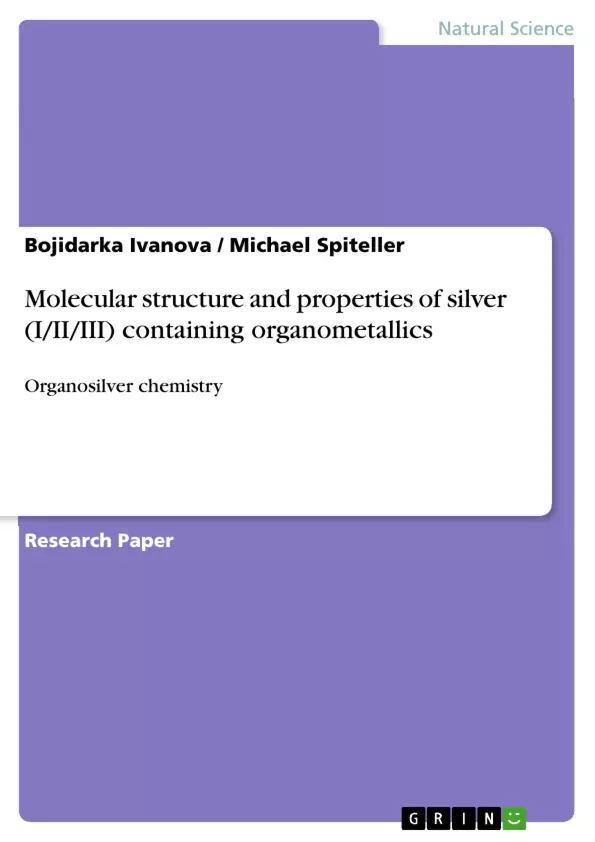Despite a tremendous number of books, monographs, textbooks and review-articles devoted to “organometallic chemistry”, the largest part of those contributions have been designed into following structure of the content: (i) Manuals, handbooks and encyclopedias summarizing important organometallic reagents in the organic synthesis; (ii) Books, containing synthetic protocols for obtaining of organometallic reagents; and (iii) Manuals on basic organic reactions catalysed by organometallics.
However, there are scarce efforts devoted to studies of reaction mechanisms, physical and chemical properties and structure of organometallics. Furthermore the largest part of available literature has been organized to serve educational needs of undergraduate and graduate students at different areas of chemist including inorganic, organic and/or physical chemistry, so that it has textbook (or a mixing) style, rather than to represent monographs on advances in organometallic research.
In this context, our book firstly in the literature has treated experimental and theoretical contributions in understanding reaction mechanisms, involving organosilver reagents as well as molecular structure and physical properties, focusing attention on chemical aspects of nature of C–M bond and role of coordination environment of inner coordination sphere of metal ion to effectiveness of mediated organic reactions from a coordination chemistry point of view, rather than to review available chemical reactions. Thus highlighting the main goal of this book to serve as a useful source of information about those molecular factors and properties governing the usefulness of those chemical classes to organic synthesis, which is important for further molecular design of new intermediates having enhanced synthetic efficiency, high enantioselectivity at mild experimental conditions.
Inhaltsverzeichnis (Table of Contents)
- Preface
- Acknowledgements
- About the contributors
- Summary
- Introduction
- Mononuclear organometallics
- Dinuclear organometallics
- Polynuclear organometallics
- –Complexes
- Conclusion and outlook
- References
- Appendix A Multi–isotopic modelling of mass spectra
- Appendix B
- Appendix C Ab initio effective core potentials
- Index
Zielsetzung und Themenschwerpunkte (Objectives and Key Themes)
This book aims to provide a comprehensive overview of the molecular structure, physical properties, and reaction mechanisms of silver-containing organometallics. It explores the crucial role of these compounds in organic synthesis, highlighting the relationship between their molecular structure and chemical reactivity. The book emphasizes the importance of experimental data obtained using mass spectrometry and single crystal X-ray diffraction in understanding the nature of the metal-carbon bond and the coordination environment of the silver ion.
- The structure and properties of organosilver compounds.
- The role of organosilver compounds in organic synthesis.
- The importance of mass spectrometry and single crystal X-ray diffraction in studying organometallics.
- The coordination chemistry of silver(I/II/III) ions.
- The molecular design of new, more efficient organosilver reagents.
Zusammenfassung der Kapitel (Chapter Summaries)
The book begins with a comprehensive introduction to the field of organosilver chemistry, outlining the challenges associated with the design and application of these reagents. The introduction emphasizes the importance of mass spectrometry and X-ray diffraction in elucidating the structure and properties of organosilver compounds.
Chapter 3 delves into the world of mononuclear organometallics, focusing on their role in decarboxylation reactions and C–H activation processes. The chapter explores the mechanisms of these reactions, highlighting the formation of mononuclear complexes with various coordination numbers and the involvement of silver(I) and silver(III) ions.
Chapter 4 examines the formation and properties of dinuclear organometallic clusters. The chapter discusses their role in C–C and C–H bond activation reactions, emphasizing the importance of CID experiments in understanding their reactivity and thermal stability.
Chapter 5 delves into the fascinating realm of polynuclear organometallics. The chapter discusses the formation of various clusters, including Agn-alkynyl clusters, highlighting the involvement of / bonding and different coordination modes. The chapter also explores the role of silver(I) ions in forming coordination polymers with various topologies.
Chapter 6 focuses on silver(I) organometallics that exhibit only interactions with the ligands. The chapter discusses the coordination behavior of silver(I) ions with arenes and ethene, exploring the different -interaction modes and the nature of the Ag… bond. The chapter also examines the role of relativistic effects in the bonding of silver(I) ions.
Schlüsselwörter (Keywords)
The book focuses on the following key areas of research: organosilver intermediates, mass spectrometry, quantum chemistry, single crystal X-ray diffraction, organic synthesis, and materials research.
- Quote paper
- Prof. Dr. Bojidarka Ivanova (Author), Michael Spiteller (Author), 2011, Molecular structure and properties of silver (I/II/III) containing organometallics, Munich, GRIN Verlag, https://www.grin.com/document/305751



